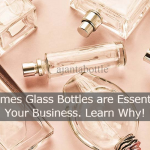Let’s look at the advantages and disadvantages of glass packaging, which has been used for many years, particularly in the food and beverage industries. You’ve almost certainly sipped a cold beverage from a glass bottle and remember how it felt in your palm. Glass has a distinct look and many appealing features, but it isn’t without flaws. It’s important to understand the advantages and disadvantages of adopting glass as your primary container or packaging material before making a decision.
Alcoholic beverage packaging is the most popular application in the global glass packaging industry. The expanding use of glass packaging in food and pharmaceutical packaging is a major driver of this market. Glass packaging’s significant qualities of long-term preservation, recycling, and reuse are projected to boost the glass packaging market over the forecast period. Glass packaging is strongly reliant on cutting-edge design and technology. High costs and a preference for plastic over glass packaging are limiting the global glass packaging business.
Glass is a naturally occurring material
Glass is made from natural resources that are readily available. These components are combined to form a single material through alchemy. It is possible to finish it without using any additional materials or chemical layers.
A better presence of carbon
Finally, as a seller or retailer, you must consider the benefits and drawbacks of glass packaging for your particular products. Do you value recyclability above everything else, or would you rather save money on shipping? Consider each factor carefully, analyze your budget, and keep in mind the type of brand image you want to present to your target market. Many commodities and merchants benefit from glass containers and packaging, but it may not be the best option for everyone.
Glass is completely recyclable
Glass recycling is a closed-loop system that generates no waste or waste products. Glass is one of the few materials that can be recycled multiple times without deteriorating in quality.
Maintains the freshness of the meal
There’s a good reason why glass is so often used in food and beverage containers. It has a non-porous, non-toxic surface with a high rate of permeability, which means it won’t leech contaminants into your snacks or drinks, which is a risk with plastic containers. As a result, glass is a wonderful material for liquids that will be preserved for a long time, such as wine or liquor, because it preserves the flavor of your tasty goods. It also holds odors and carbonation well, making it an excellent choice for perfume, seltzer water, or soda.
Product security
Food and beverage packaging made of glass is one of the safest materials available. It is non-toxic and does not necessitate the use of any additional lining materials. Because glass is GRAS (Generally Recognized as Safe) by the FDA, it is the only widely-used food packaging material to do so.
Appeal to the eye
Glass has always been of the greatest quality and will continue to be so. The colour of a glass bottle never fades and it has a long shelf life. Bottles from Ajanta Bottles are clear, allowing your product to shine. It’s also a good idea to use different glass tints to incorporate your brand’s colours and/or overall identity.
Aesthetic and Feeling of High Quality
It’s crucial to think about how your customers will feel when they use your products, and glass offers a distinct sense of luxury. Because glass has been such a popular packaging option for so long, it gives off an antique or retro vibe. When a customer grabs a glass bottle, their sensations are considerably different than when they hold a simple plastic bottle because of the smooth, chilly touch. Glass is frequently viewed by consumers as providing a more pleasant, premium, and conventional experience.
Wrap up
Finally, as a seller or retailer, you must consider the benefits and drawbacks of glass packaging for your particular products. Do you value recyclability above everything else, or would you rather save money on shipping? Consider each factor carefully, analyze your budget, and keep in mind the type of brand image you want to present to your target market. Many commodities and merchants benefit from glass containers and packaging, but it may not be the best option for everyone.






